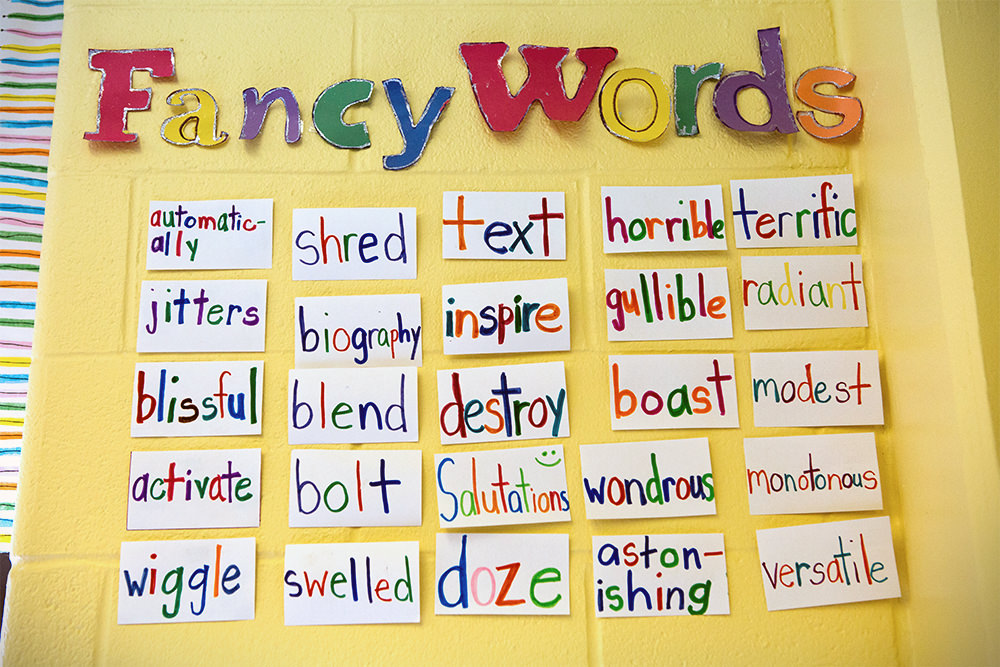Before Message Time Plus
Build engagement and help prepare children to read and understand the message you are going to write by offering them some specific supports.
MTP (K) - Before the Message
Some supports you will want to offer include words and phrases that will appear in your writing. Review your weekly high frequency words and the vocabulary that you intentionally embedded in your writing piece. Explain the context for your writing. How did you come up with your idea? What decisions did you make as a writer when planning your piece? Importantly, let them know what you want them to learn. Ask them to think about or look for an element related to your primary literacy objective while you write. Supporting children in these ways will help in all areas of language development; listening, speaking, reading, and writing!
Rich Vocabulary
 Message Time Plus is a wonderful instructional practice for exposing children to robust and academic vocabulary. When planning your message, embed one to three grade-appropriate literary and/or academic vocabulary words. Seeing and reading vocabulary in context will increase the likelihood that children will learn what they mean and use these words independently when they’re speaking and writing. When selecting vocabulary, include words that children will most likely encounter again and can attempt to use in conversation.
Message Time Plus is a wonderful instructional practice for exposing children to robust and academic vocabulary. When planning your message, embed one to three grade-appropriate literary and/or academic vocabulary words. Seeing and reading vocabulary in context will increase the likelihood that children will learn what they mean and use these words independently when they’re speaking and writing. When selecting vocabulary, include words that children will most likely encounter again and can attempt to use in conversation.
Literary vocabulary are often called Tier II words. These are robust academic words that require instruction and are often found in high quality children’s literature. Examples of such words include: rambling, furious, and intrepid.
Tier III words are content area words such as “photosynthesis” or “evaporation.” These are vocabulary words that are needed to discuss specific fields of study like mathematics, social studies, and biology.
The vocabulary words you embed in your message are words you want to teach, preview, or review. They are always connected to other parts of your instructional day.
- Use words connected to your read alouds.
- Use words from content areas (i.e., math, science, social studies).
- Use words that reflect the life of the classroom (i.e., responsibility, respect).
Oftentimes, you support children’s decoding and comprehension before they read your piece by previewing these words. Offer children a child-friendly definition of the words and post them beside your board.
Tip: Post vocabulary words in the same place each time you do MTP. For example, write them on index cards or sentence strips and post them on the right side of the board.
Think Aloud
To think aloud is to verbalize your thoughts in front of your children. Thinking aloud in front of children models the processes that proficient writers go through when deciding what and how to write. Thinking aloud about the process of planning and writing the message makes the elements of good writing visible and accessible to young writers. It also provides the support needed for the children to successfully share in reading and comprehending your writing. In essence you are saying, “Watch me do this; you can do it too. Let me show you how.”
During the think aloud in Message Time Plus, you will verbalize what you are thinking about before you begin to write. While you think aloud, you will:
- Set the context for the writing
- Explain the decisions you made as a writer
- Connect your writing to what children are learning
- Expose children to key vocabulary
- Explain what you are going to teach and how it will help the children as readers and/or writers
- Set a purpose for reading
Think Aloud Example
One of the things that people do when they travel is keep a travel log, a sort of diary of events related to their travel. This helps them to remember things about the trip that they don’t want to forget. As I write today, I’m going to imagine that I’m the grandfather in the story, Grandfather’s Journey that we read earlier today. I’m going to create an entry in my travel log or diary. I’m also going to use similes to describe the images I want to remember. Similes will help me create better mental images by comparing one thing to another. See if my similes help create strong mental images for you as well.
Tip: Keep in mind that your think aloud should leave room for children to problem solve. For example, don’t expose children to every challenging word that you will use in your message.

Comments (2)
Log in to post a comment.